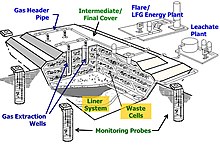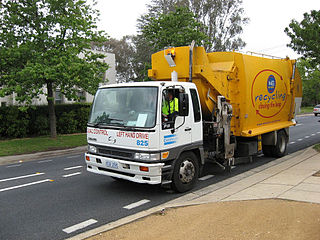Background
China is the largest importer of waste plastics, accounting for 56% of the global market. [2] Meanwhile, the United States, Japan, Germany, and the United Kingdom are the main source countries. [2] Since 2010, China has begun to implement more stringent waste import policies that correspond with the quality of import waste and improvement of domestic production capacity. [4] Likewise, environmental and health considerations have led China to introduce the waste import policy in 2017 which bans the import of 24 types of solid waste, including certain types of plastics, paper, and textiles. [5] Based on a study by the University of Georgia, it is predicted that by 2030 with this policy, 111 million metric tons of plastic waste will be left unaccounted for. [6]
Chinese plastic history
In the 1990s, economic development and the rise in living standards increased China's demand for plastic products by 21% annually. [7] However, in that year, China lacked raw materials, and production levels were incapable of meeting its growing needs. Moreover, they did not have an efficient recycling system, and waste was collected through an informal recycling network. [7]
From 1980 to 1994, the recycling rate of waste products in China fell by 11%, which brought about pressure on the state. In some big cities, a large number of waste plastics were not being recycled and led to blockages in the urban drainage system. [7] About 60% of plastic waste in China was discarded or not recycled at that time. In 1994, China's agricultural film consumption was 1.9 million tons, but 300,000 tons of agricultural film remained in farmland every year, affecting the soil and causing animal diseases. [7]
In the early 21st century, China had become the second largest plastic producer in the world, second to the US. However, China's domestic productivity still could not meet their demand for plastics. [8] Furthermore, the rising crude oil prices at the time also led to the inflation of the price of pure plastics. At the same time, although the price of waste plastics had also increased, waste plastics were still relatively cheap when compared to virgin plastics. Thus, in order to cope with demand and lower costs, the import of waste was increased again. [8] This led China to rely heavily on the import of waste. Furthermore, this made other countries in the world dependent on China's imports of waste plastics. [8]
The Green Fence Operation
The quality of recyclable materials exported to China gradually declined; a large amount of the waste entering China was mixed with food, garbage, and other pollutants. These unmanageable waste products have thus burdened the Chinese government. [5] Similarly, the profitability of the waste industry attracted speculators to invest in the market. In order to enhance the management of the market and the reduction of illegal traffic, the Chinese government decided to implement the green fence operation. [9] This initiative was designed to monitor the quality and flow of incoming waste and combat smuggling. [9] It was reported that in just five months, China customs had seized 337 cases of smuggled solid waste, amounting to 1.7 billion RMB in value. [5]
According to the regulations of the China Waste Plastics Association, import license transactions are prohibited, and imported waste plastics must be delivered to factories with import qualifications in accordance with the provisions of the import license. Since countries are dependent on China's waste imports, this action had adversely affected the entire value chain of waste plastics and exporting countries. [9]
In Chinese ports, inspections of waste have slowed down port operations, which means that exporters need to bear the demurrage of the goods left in the dock before the inspection. At the same time, a large number of waste materials that have not passed the review have also been returned. [9] By the end of 2013, China's waste imports had been reduced by one million metric tons. [5] China's policy has made exporting countries aware of the drawbacks of excessive dependence on exports. Hence, this will bring a negative impact on the domestic reprocessing capacity of exporting countries. [5]
Plastic recycling

It was reported that roughly 50% of plastics are being utilized in disposable manufacturing processes such as packaging, agricultural films, and disposables, while 20 to 25% was used for long-term infrastructure like pipes, coating for cables and structured materials and the remainder is used for durable moderate life consumer goods such as electronics, furniture, and vehicles. [10] In general, plastic is considered to be durable and non-biodegradable hence making them difficult to decompose for at least a few decades with some lasting over hundreds or thousands of years. [10] Judging from the domestic environmental factors, even some degradable plastics may still exist for a considerable period of time due to their degradation rate which is also influenced by factors such as the exposure of UV, oxygen, and temperature, whereas biodegradable plastics require the need of adequate microorganisms. Therefore, the rate of degradation in landfills and terrestrial, marine environments would tend to vary. [10]
Due to poor management of plastic waste, most plastics are currently disposed of in unauthorized dumping sites or burned uncontrollably in the field. [11] Moreover, due to the particularity and quantity of plastics, the recycling of plastics has always been a problem. In theory, most thermoplastics could be recycled in a closed loop. However, plastic packaging may call for the need to use different kinds of polymers as well as other materials such as metals, paper, pigments, inks, and adhesives, which make it challenging to control. [10] Setting up a landfill is one of the traditional methods of waste managements, but some countries lack the land to accommodate to landfills. The process of incineration will reduce the need for a dedicated plastic waste landfill, but this brings up the issue of whether or not harmful substances being released into the atmosphere during this process.
Furthermore, collecting and packaging plastics for sale to other countries is much cheaper than recycling. [10]
Challenges of waste disposal
Waste disposing is a great challenge faced by China, each type of waste disposing industry has its advantages and disadvantages. So choosing a proper combination of different waste disposing industries is much more efficient than adopting monotonic industry. Nevertheless, the technology on waste disposal industries should always improving and creating. Importantly, technological progress can act as an endogenous factor to increase the aggregate demand in economy and ultimately driven the economic growth in China.
Sorting
The first step of disposing of the waste is to divide them into different categories. Recycling standards are various from different countries. But we can divide them into two big categories, recyclable and non-recyclable waste. In general, plastic products can be fully recycled. The difficulty is the sorting process. For example, although the plastic bottle is theoretically 100% recyclable, the plastic bottle cap and the label cannot be mixed together for recycling because they are different plastic materials. The sorting machine is currently unable to unscrew the cap and tear off the label, so this step must be done manually by the sorting worker. This process obviously increases the business cost and human resources. Some illegal industries recycled mixed plastic products together to control the costs, this cause incomplete recycling of plastic which causes some unexpected environmental issues.
Burning
The general disposal method is to categorize the types of waste and dispose of them in different processes. However, a few illegal industries want to minimize the cost of disposing of the waste, so they choose the easiest way to deal with the rubbish. By inappropriate use of landfills and incinerators, earning money from the disposal of waste, rather than the secondary benefits of proper recycling waste. The burning of uncategorized waste produces toxic and contaminate air to the sky which harmful for human health. The carbon dioxide also produced by the process of burning wastes. By statistic, the global total carbon dioxide produced in 2018 was about 37.1 gigatonnes. [12] Some power plants were operated by the heat produced from the burning of waste (Waste-to-energy plant). It is a combination of disposing of waste and producing electricity which widely adopted in China's waste disposing industries.
Pyrolysis plants

Pyrolysis plants are an innovative technology that can aid waste disposal. The process is described as such: "Plastics are crushed and melted at temperatures below gasification temperature and in a low-oxygen environment. Heat decomposes plastic polymers into smaller hydrocarbons that can be refined into diesel or even other petrochemical products, including new plastics." This technology is still in the demonstration phase and hoping to expand globally. The facilities are built in China as well. Pyrolysis plants can recycle many hard to decompose materials that normal recyclers cannot. It will only produce a little carbon dioxide and no contamination at all. The economic profits from expensive pyrolysis plants is the determinate factor of whether more of these plants will be built.















